Latvia offers a diverse range of sites combining medieval history and Baltic nature. The country brings together different periods and landscapes: the Old Town of Riga with its Art Nouveau buildings, the castle of Cēsis, the beaches of Jūrmala and the extensive forests of Gauja National Park. Latvian cities preserve evidence of German, Swedish and Russian rule. Beyond the capital Riga, places like Liepāja with its military port or Kuldīga with its waterfall invite exploration. The coastal region extends for several hundred kilometres along the Baltic Sea. The natural landscapes include extensive forests, wetlands and lakes. Gauja National Park protects river valleys with sandstone cliffs and historic castle ruins. Rural areas display traditional wooden architecture and agricultural structures that have shaped life in the Baltic regions for centuries.

Riga, Latvia
The House of the Blackheads dates back to the 14th century and originally served as a meeting place for the Brotherhood of Blackheads, a guild of unmarried German merchants in Riga. The building was destroyed during World War II and faithfully reconstructed between 1995 and 1999. The facade displays richly decorated Gothic and Renaissance elements with astronomical clocks and sculptures. The house now contains a museum documenting the history of the merchant guild and the city of Riga.
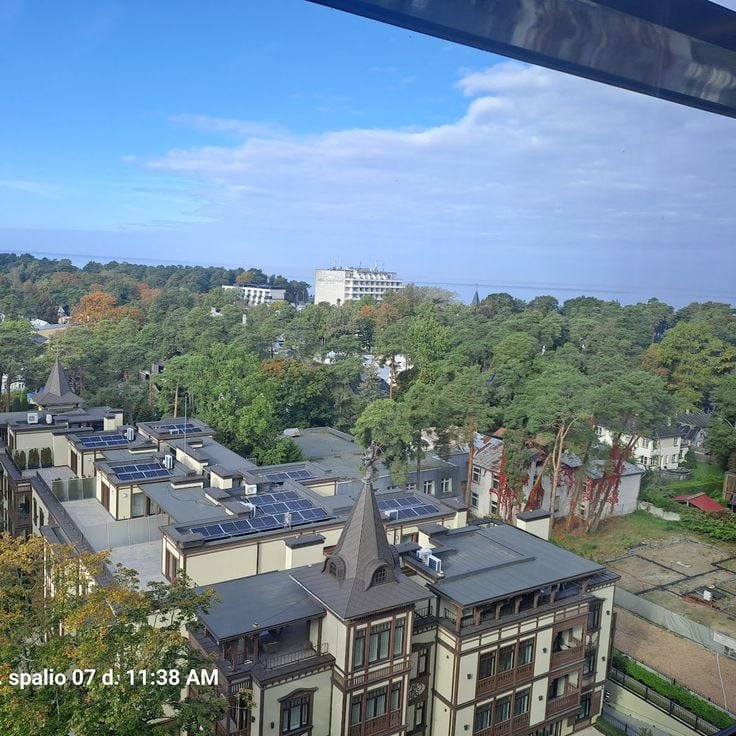
Jūrmala, Latvia
Jūrmala stretches 33 kilometers along the Gulf of Riga, combining several seaside resorts into a continuous coastal city. The beaches extend with fine sand and shallow Baltic Sea waters. The historic center preserves over 4,000 wooden villas from the 19th and early 20th centuries, built with verandas, turrets, and carved decorative elements. Jomas Street forms the main pedestrian zone with shops and restaurants. Mineral springs in the area are used for therapeutic treatments. The Dzintari Concert Hall offers a program of classical music during the summer months.
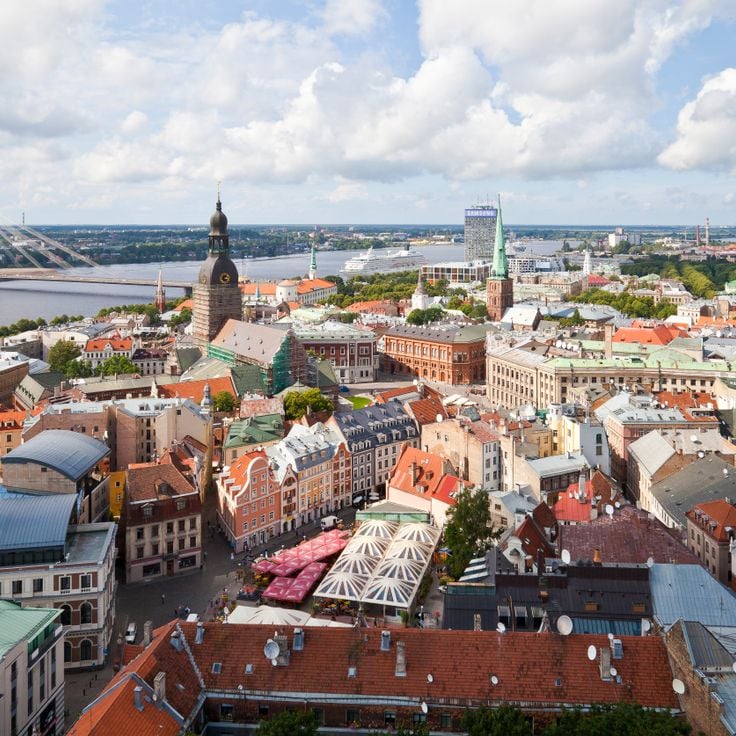
Riga, Latvia
Riga was established in 1201 and combines medieval architecture with the world's largest collection of Art Nouveau buildings. The Old Town features guild halls, merchant houses and churches, which together with the Art Nouveau districts form a UNESCO World Heritage Site since 1997. The Latvian capital stretches along the Daugava River and merges Hanseatic traditions with contemporary Baltic culture.

Riga, Latvia
Riga Cathedral was founded in the 13th century and stands as the most significant medieval church building in the city. The cathedral houses a monumental organ from 1884 with 6768 pipes, ranking among the largest instruments in Europe. The structure combines Romanesque, Gothic and Baroque architectural elements resulting from centuries of modifications. The interior features high vaulted ceilings and historic burial plaques. Regular organ concerts attract visitors from various countries. The cathedral is located in the historic center of Riga and forms a central point of the Old Town.
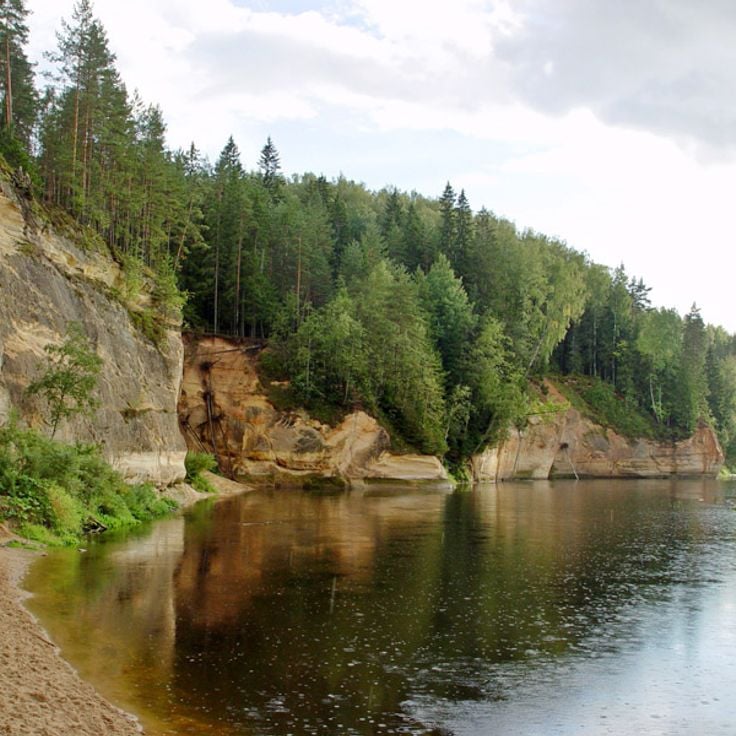
Latvia
Gauja National Park follows the course of the Gauja River and has protected a landscape of red sandstone cliffs, natural caves, and extensive pine forests since 1973. The area contains several medieval castles and castle ruins, including Turaida Castle and the ruins of Sigulda Castle. The Gauja has carved deep valleys into the Devonian sandstone, creating cliff faces up to 90 meters high. Visitors can use walking trails through the forests, visit Gutmanis Cave, or explore the historic fortifications.

Sigulda, Latvia
Sigulda sits in the Gauja Valley and hosts three significant castles from different periods: the medieval 13th-century castle built by the Livonian Brothers of the Sword, the 19th-century New Castle, and the ruins of Turaida Bishop's Castle. The town serves as a gateway to Gauja National Park, providing access to hiking trails through forested hills and along the river. During winter, Sigulda operates a bobsleigh and luge track that hosts international competitions. The surrounding landscape of rolling hills and forests has earned comparisons to Central European regions due to its distinctive topography.
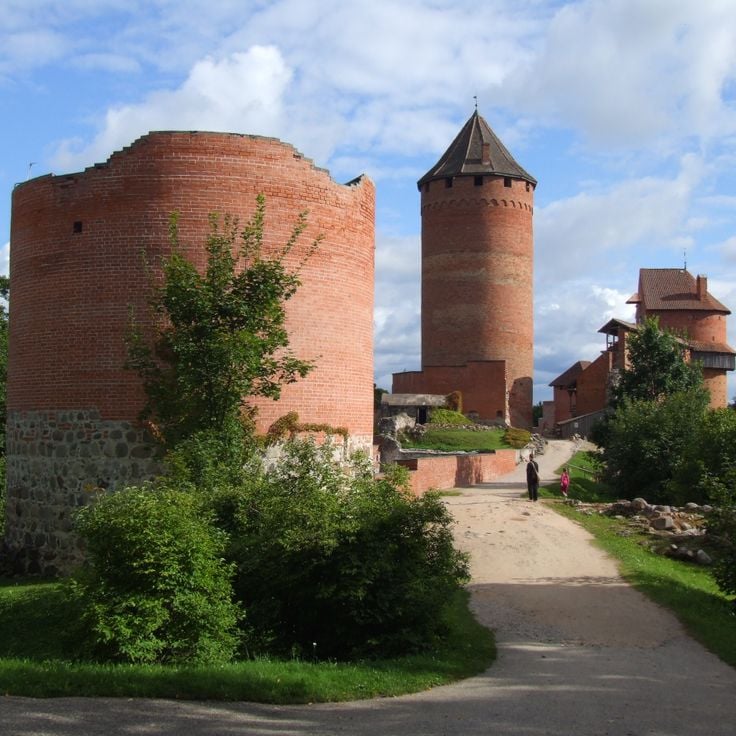
Sigulda, Latvia
Turaida Castle was built in the 13th century from red brick and stands above the Gauja Valley within the national park. The fortress now houses a museum dedicated to the region's history, documenting medieval architecture and local development. The complex includes several restored buildings, a defensive tower with an observation platform, and gardens featuring wooden sculptures based on Latvian motifs.
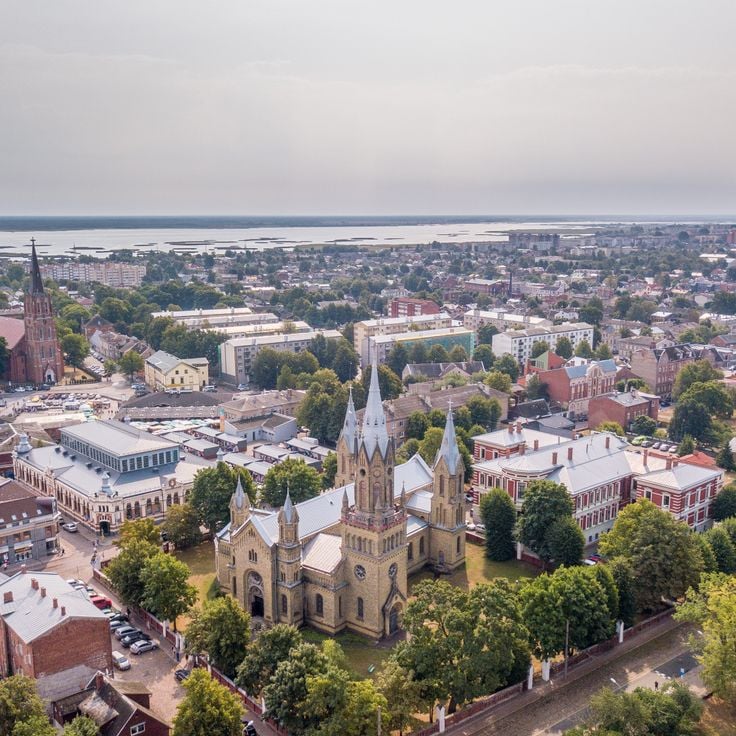
Liepāja, Latvia
Liepāja is a port city on the Latvian Baltic coast, known for its active commercial harbor and wide sandy beach. The Karosta district, a former naval base from the Tsarist era, now contains abandoned military structures, an Orthodox cathedral, and a prison museum. The city is considered the birthplace of Latvian rock music and hosts several music festivals, while its center features historic Art Nouveau buildings.
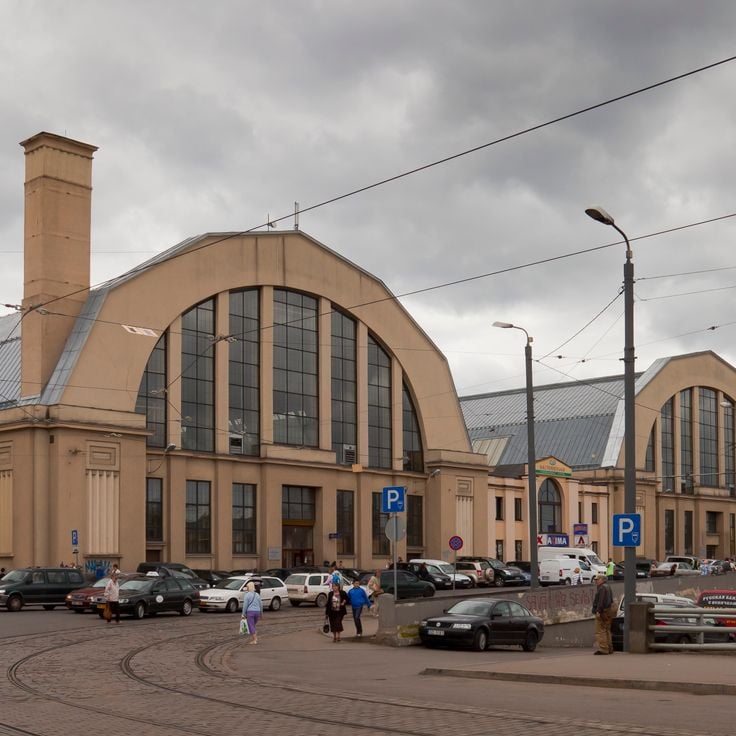
Riga, Latvia
The Central Market of Riga occupies five pavilions housed in former German zeppelin hangars built in 1930. These market halls offer a wide selection of fresh produce, including meat, fish, dairy products, fruits and vegetables from local suppliers. Visitors can also find traditional Latvian handicrafts and regional specialties. The architecture combines industrial heritage with practical market function, attracting both locals and tourists on a daily basis.
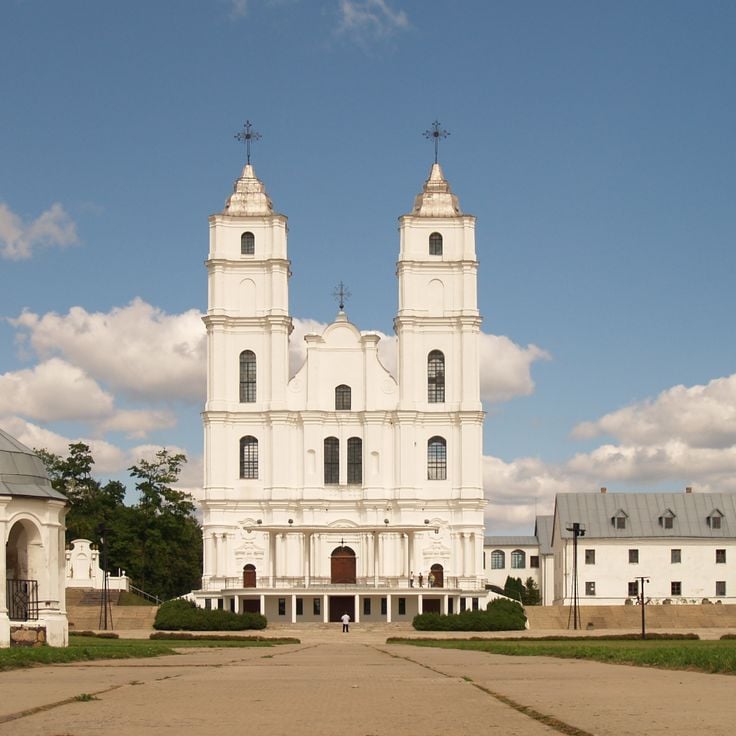
Aglona, Latvia
The Basilica of Aglona was built in the 18th century in the Baroque style and stands as the most important Catholic shrine in Latvia. This church attracts thousands of pilgrims annually, especially during the Feast of the Assumption on August 15th. The basilica houses the venerated image of Our Lady of Aglona, a 17th-century Byzantine icon. The complex includes both the basilica and a Dominican monastery. Pope John Paul II visited this sanctuary during his trip to Latvia in 1993.
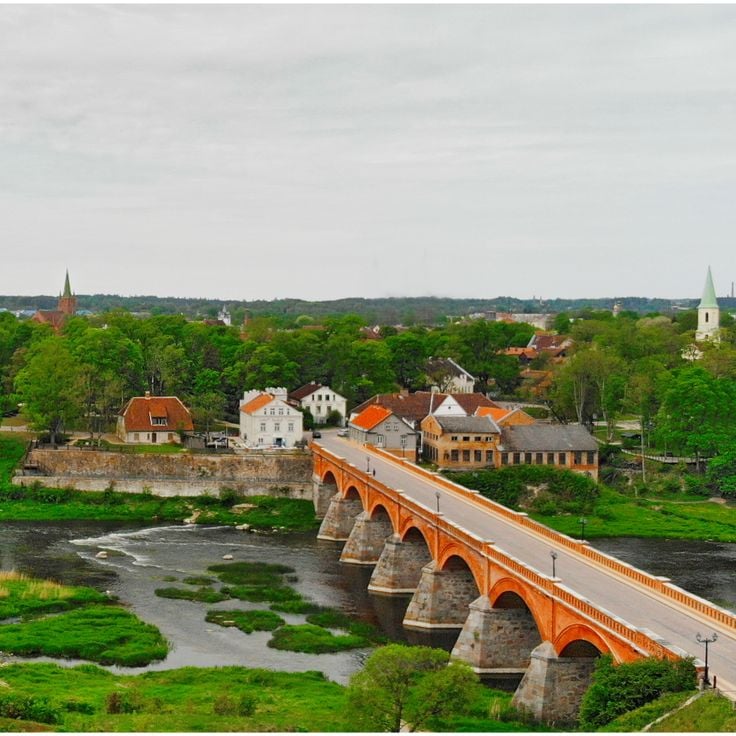
Kuldīga, Latvia
Kuldīga is a town in western Latvia, positioned on the banks of the Venta River. The historic center preserves a notable collection of wooden architecture from the 17th and 18th centuries. The town served as an important trading center during the Duchy of Courland period. Nearby stands the Ventas rumba, the widest waterfall in Europe, stretching 249 meters across. The 19th-century brick bridge connects both banks of the Venta. Narrow cobblestone streets lead through neighborhoods filled with colorful wooden houses and historic warehouses.
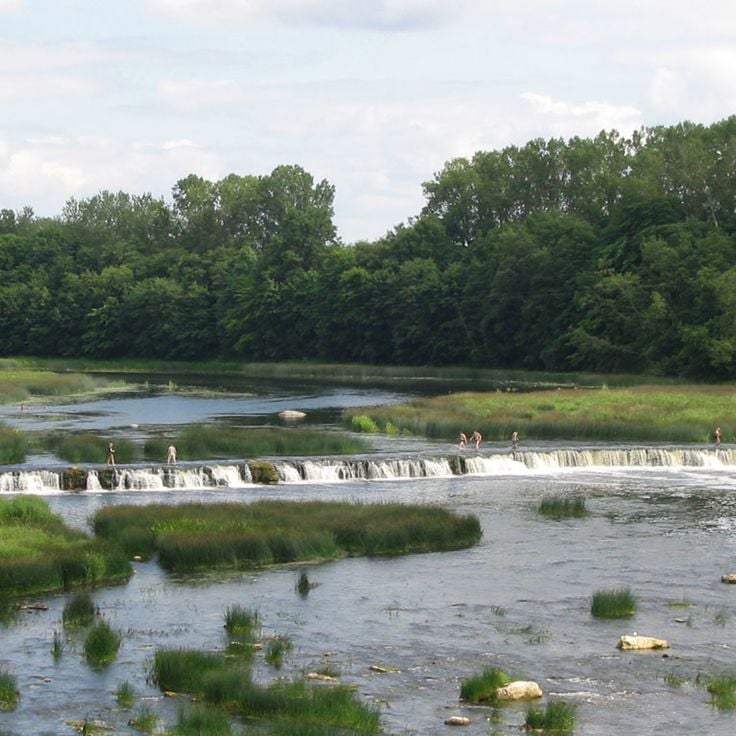
Kuldīga, Latvia
Ventas Rumba forms the widest waterfall in Europe, stretching 240 meters across the Venta River. The water flows over a low rock ledge created during the last Ice Age. Located in the historic center of Kuldīga, this cascade attracts visitors particularly during spring salmon migration, when fish leap upstream against the current.
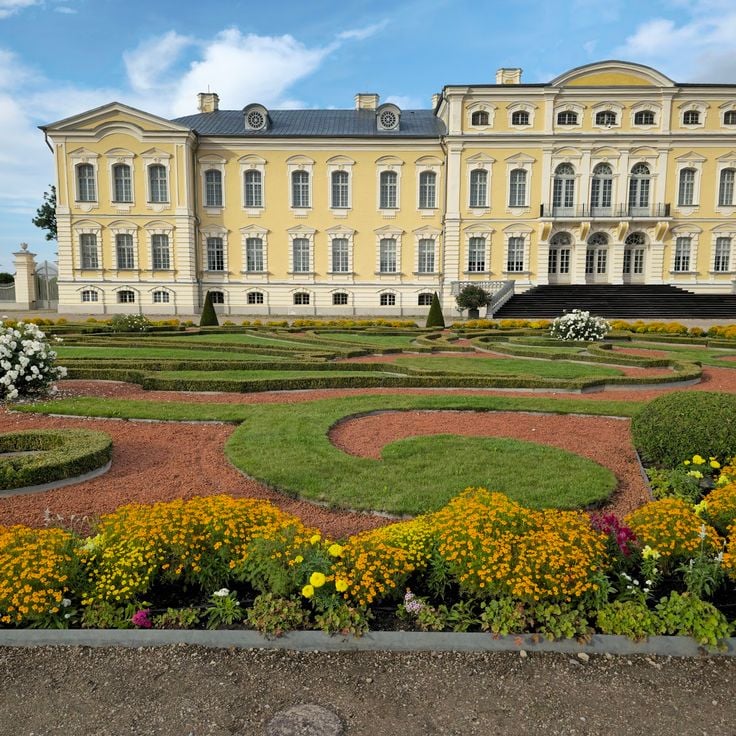
Bauska, Latvia
Rundāle Palace was built between 1736 and 1768 to designs by Italian architect Francesco Bartolomeo Rastrelli for Duke Ernst Johann von Biron of Courland. The Baroque ducal residence contains 138 rooms, including grand state apartments with original stucco work and wall paintings. The French-style gardens, reconstructed according to historical plans, cover 10 hectares and feature parterres, bosquets, and a rose garden with over 2,600 rose bushes.
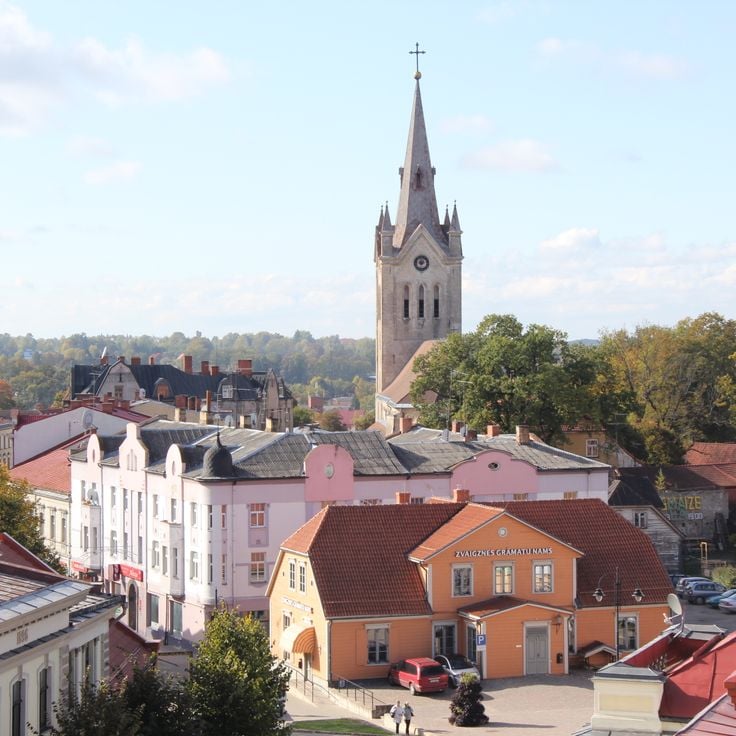
Cēsis, Latvia
This medieval town was established in the 13th century and preserves the ruins of a Livonian Order castle. The historic center displays restored wooden houses and stone buildings from different periods. The castle complex includes a preserved defensive tower that visitors can climb, along with a museum covering regional history. Streets wind through neighborhoods with 18th and 19th-century structures, while several churches document religious architecture.
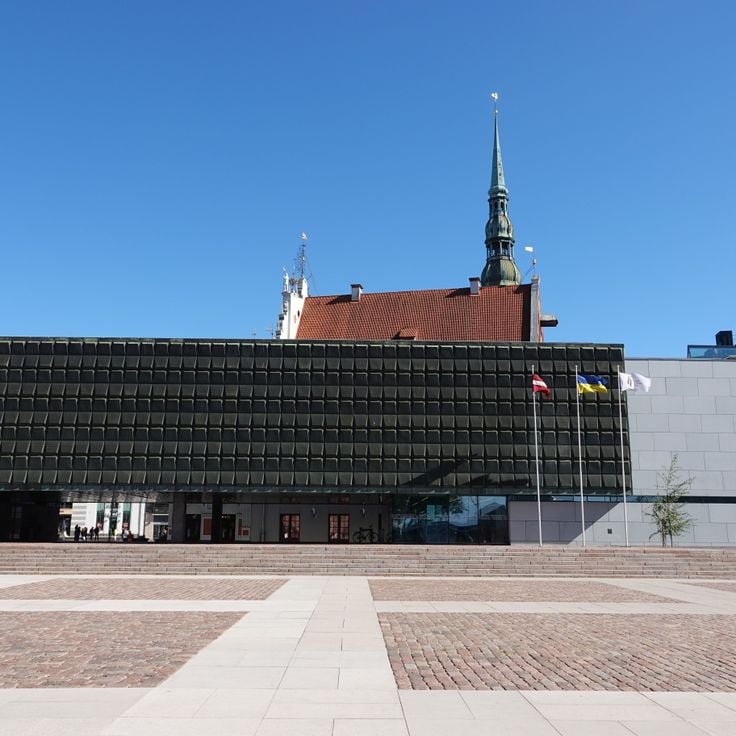
Riga, Latvia
This museum documents the three periods of occupation in Latvia between 1940 and 1991 by the Soviet Union and Nazi Germany. The exhibition presents historical documents, personal testimonies from witnesses, and everyday objects from the different phases of occupation. The museum illustrates the impact of Soviet and German rule on the Latvian population, covering topics such as deportations, resistance movements, and daily life under totalitarian regimes.
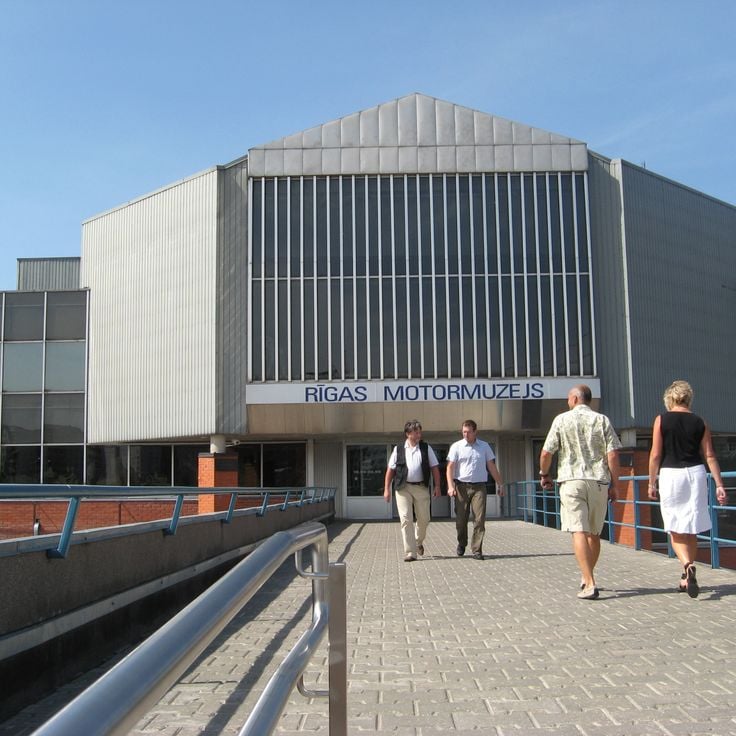
Riga, Latvia
The Riga Motor Museum presents the history of the automobile through an extensive collection of over one hundred vehicles. The museum displays both classic European automobiles and a significant collection of Soviet-era cars, including government limousines and military vehicles. The exhibitions document the technical evolution of the automobile from the early 20th century to the present day. Interactive displays and audiovisual presentations in multiple languages explain the history of individual vehicles and their cultural significance. The museum dedicates particular attention to Latvian automotive history and the role of vehicles in Soviet society.
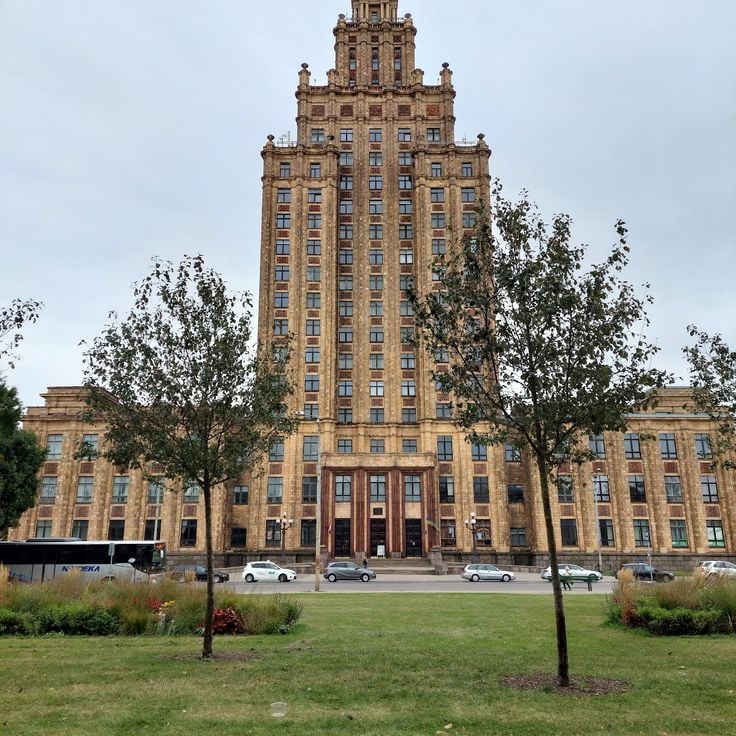
Riga, Latvia
The tower of St. Peter's Church provides a complete panoramic view over Riga's Old Town from its observation platform at 72 meters height. This Gothic church dating from the 13th century features an elevator that takes visitors to the viewing level. From the top, one can observe the red rooftops of historic buildings, the Daugava River, and the various districts of the Latvian capital.

Riga, Latvia
This museum occupies a reconstructed apartment showcasing authentic Art Nouveau interiors with original furniture, decorative elements and household items from the early 20th century. The exhibition documents Riga's architectural development during the Art Nouveau period between 1901 and 1914. Visitors can explore interactive displays that illustrate the design principles and domestic life of this era, with costumed guides providing historical context.

Riga, Latvia
Riga Town Hall Square forms the heart of the medieval Old Town. This central square is lined with significant buildings, including the reconstructed 14th-century House of the Blackheads with its ornate facade and the rebuilt Town Hall that was destroyed during World War II. The square serves as a gathering place and venue for city celebrations. The surrounding area combines Gothic, Renaissance, and Baroque elements of Baltic architecture. The ensemble is part of the UNESCO World Heritage Site of Riga's Old Town.
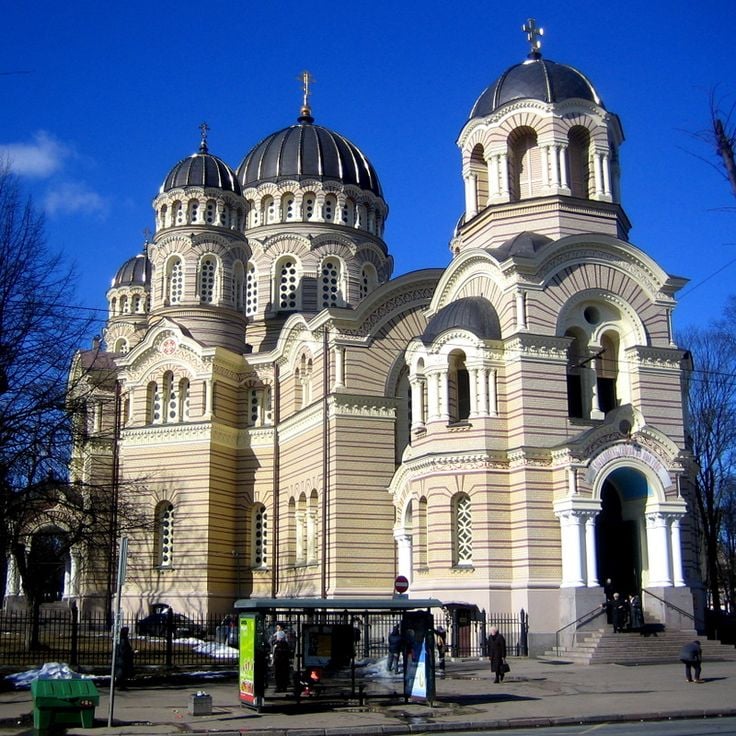
Riga, Latvia
The Nativity of Christ Cathedral was inaugurated in 1884 and serves as a significant Orthodox place of worship in Riga. The building features five gilded domes that stand out against the surrounding architecture. The interior houses traditional religious frescoes and mosaics in Neo-Byzantine style, depicting biblical scenes. The cathedral was repurposed during the Soviet era and underwent restoration following Latvia's independence.

Riga, Latvia
The Freedom Monument was erected in 1935 to commemorate the soldiers who fell during the Latvian War of Independence. This 42-meter-high obelisk is crowned by a female figure holding three golden stars aloft. These stars represent the three historical regions of Latvia: Courland, Vidzeme, and Latgale. The base of the monument features numerous reliefs and sculptural groups depicting important moments in Latvian history.
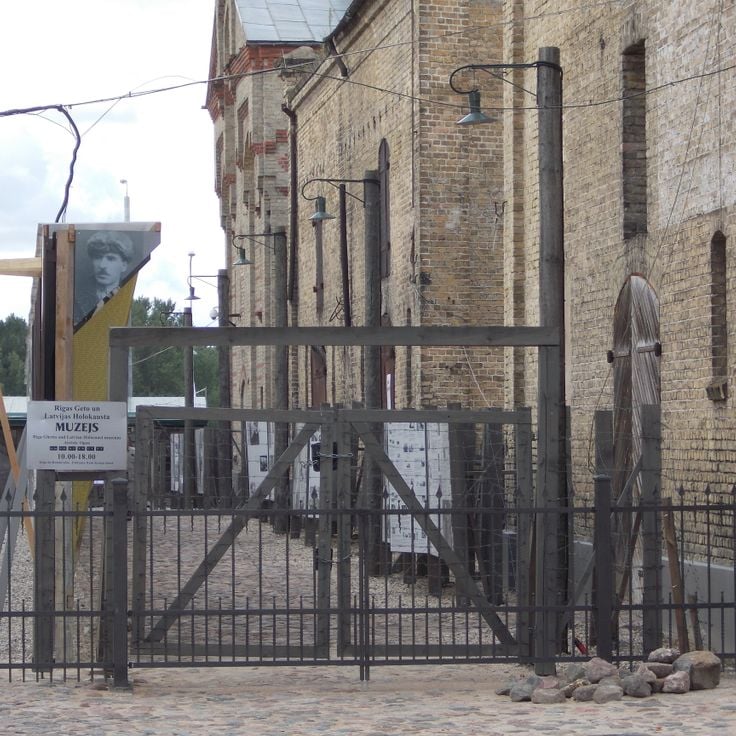
Riga, Latvia
The museum documents the history of the Jewish community in Latvia during the German occupation between 1941 and 1944. The exhibition presents photographs, personal belongings and testimonies from ghetto survivors. The museum is located in a historical building within the former ghetto area and displays the living conditions of the imprisoned population as well as the deportations to extermination camps.
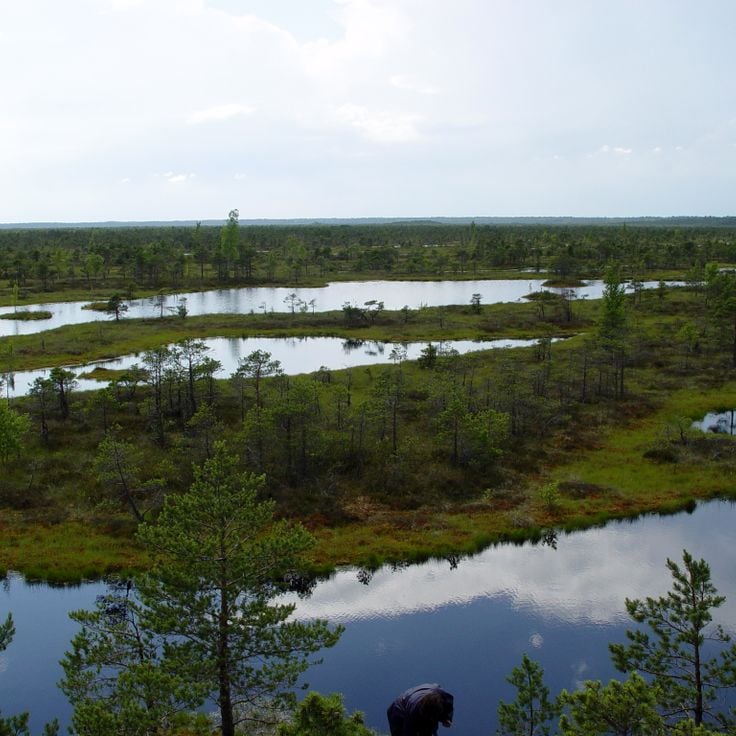
Latvia
Kemeri National Park was established in 1997 and covers 381 square kilometres. This protected area includes bogs, sulphur springs, pine forests and wooden boardwalks for wildlife observation. The park is located on the coast of the Gulf of Riga and provides habitat for numerous bird species. Visitors can explore the diverse landscapes on marked trails and discover the natural mineral springs.
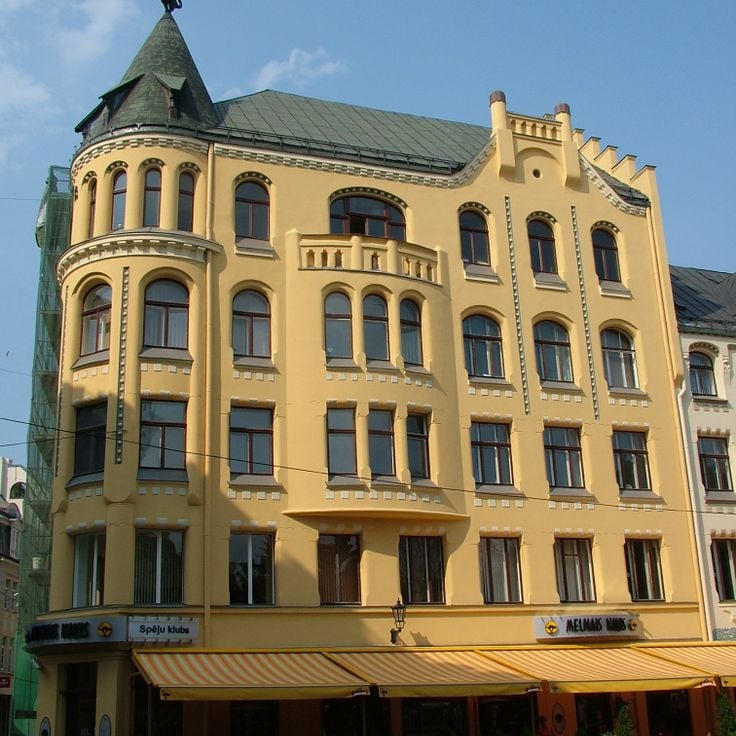
Riga, Latvia
The House of Cats was built in the early 20th century and features two black cat sculptures positioned on the roof turrets. Located in the historic center of Riga, this building represents typical Art Nouveau architecture with decorated facades and ornamental details. The cats were originally placed with their tails facing the Great Guild, which has given rise to an anecdote about a dispute between the owner and the merchant guild. Today, this building serves as a recognizable landmark in the Latvian capital and attracts visitors interested in historical architecture and urban legends from the period.
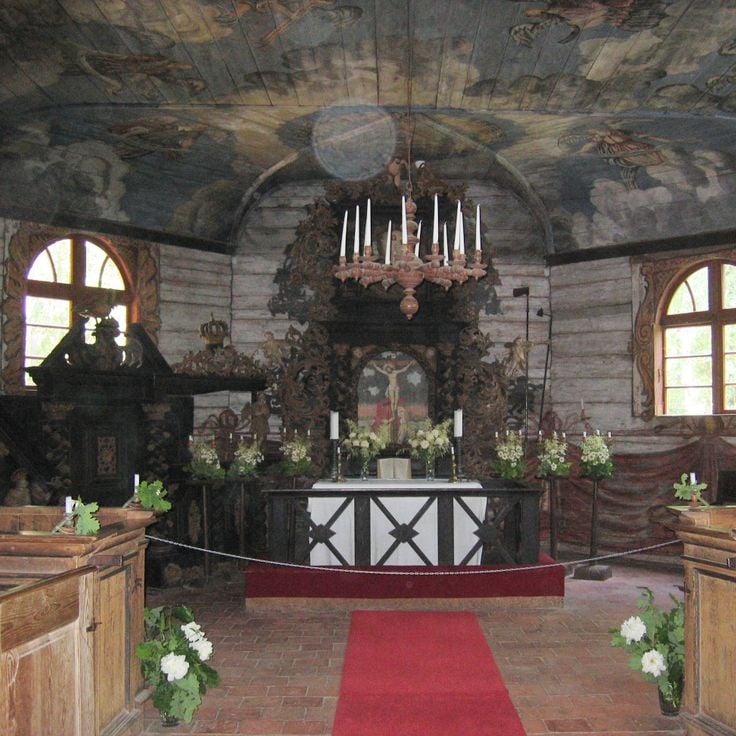
Riga, Latvia
This museum occupies eighty-seven hectares of forested land on the shores of Lake Jugla and displays over one hundred historic buildings from all regions of Latvia. The collection includes farmsteads, windmills, fishermen's huts, and an eighteenth-century wooden church. Visitors can observe traditional crafts being practiced and attend seasonal events that showcase Latvian customs.
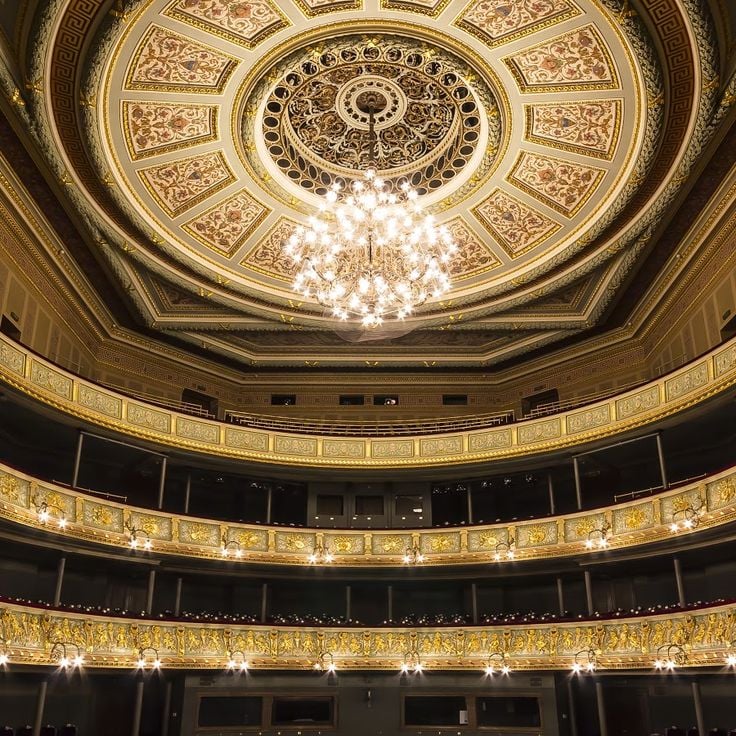
Riga, Latvia
The Latvian National Opera was built in eighteen sixty-three and serves as the main venue for the National Ballet and Opera companies. The auditorium seats six hundred spectators and hosts a diverse repertoire of classical and contemporary performances. Located in central Riga, the building has undergone several renovations to update its technical facilities. The institution plays a central role in the cultural life of the Latvian capital.

Riga, Latvia
Cultural institution opened in 2014 designed by American architect Gunnar Birkerts, glass and steel building housing over four million documents and providing panoramic reading spaces.
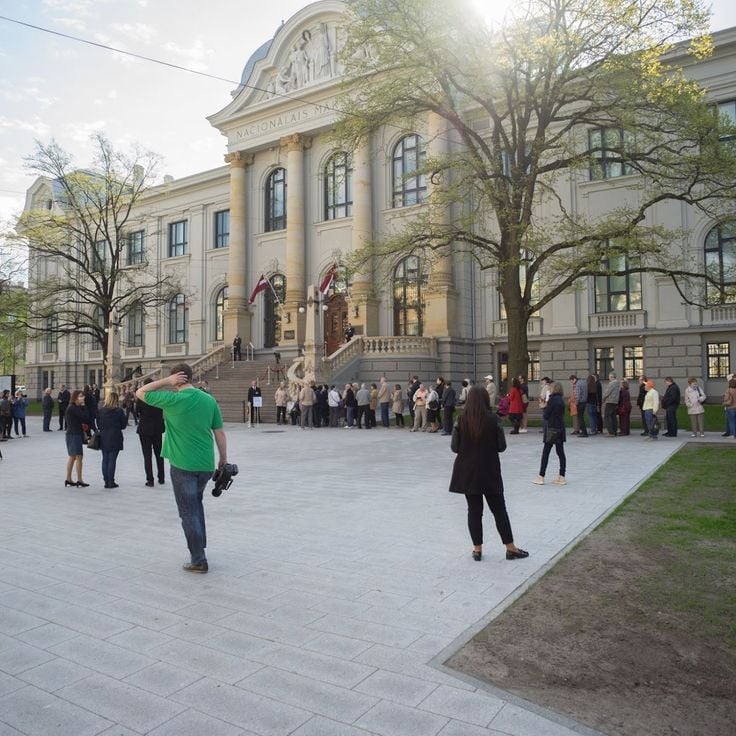
Riga, Latvia
The Latvian National Museum of Art was established in 1869 and houses the most extensive collection of Latvian artworks from the 18th to the 20th century. The museum displays paintings, sculptures, graphics and applied arts by Latvian artists from different periods. The collection documents the development of Latvian art history and features works by national masters. The neoclassical building is located in central Riga and has undergone several extensions and renovations.